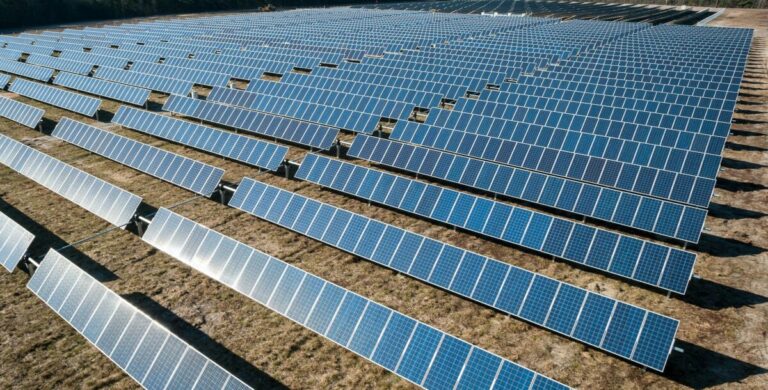After analyzing the crystalline silicon PV industry’s future material use, including glass, aluminum, silver, copper, ethylene vinyl acetate (EVA) and silicon, a German research team found that a circular recycling approach could solve foreseeable supply problems. It could also reportedly become economically sustainable.
Researchers in Germany analyzed the crystalline silicon PV industry’s future material consumption, including glass, aluminum, silver, copper, ethylene vinyl acetate (EVA) and silicon, and found that a circular recycling approach could provide a solution to supply chain and waste issues, with the potential to be economically sustainable.
The team presented a detailed vision of a ‘perpetual utility cycle’ for solar panels, arguing that now is the time to make changes to enable cradle-to-cradle recycling, and that Europe is likely to lead the way.
“I would say that truly circular recycling is in the future for almost everything we produce today. In my opinion, the biggest challenge is that we still lack processes that enable circular recycling to compete economically with the generation of new materials,” says research leader Ian Marius Peters. pv magazine. “Europe has the strongest regulatory framework, and I expect this will remain so for some time. For that reason, I believe that Europe will take the lead in the coming years.”
Peters states that circular recycling will make PV even more sustainable than it is now. Other benefits include reclaiming resources, especially glass, and even land. There is currently no strong economic incentive, so recycling is driven by policy and regulation.
In the study, the researchers relied on a future scenario drawn up by PV scientist Pierre Verlinden, which foresees a cumulative capacity of 80 TW by 2050 and a “steady-state production value of approximately 3.3 TW/year” in 2033. scenarios, economic value and volumes to determine the role of circular recycling to support the growth trajectory of solar energy, and to avoid waste streams at “a scale approximately equal to today’s global e-waste”.
The recycling of silver, glass and silicon was examined. For example, it noted that the need to replace or reduce silver due to competition from other industries with higher margins could outbid the PV industry due to its narrow margins.
The team noted that if silver is replaced, it will be “essential” to recycle silicon, copper and aluminum. The latter is seen as the second most valuable recycling product from a PV panel, and “its role is likely to increase as silver is replaced,” the scientists said.
Glass recycling is seen as “vital”, especially in the mid-2030s when the amount of glass from old panels will reach tens of millions of tons, as there is no alternative market to absorb it. “The most suitable market, and in some cases the only one large enough to absorb the amount of recycled material, will be the production of PV modules themselves,” the team emphasizes.
Recycling processes must be able to retain the value of recycled components, the report said. For example, recycling silicon could reduce expected energy demand and shorten the energy payback period of modules made with recycled silicon. “Circular recycling of silicon has the potential to become the main economic driver for module recycling,” they say.
Looking ahead, teams are working on PV module designs that are easier to disassemble. “We have realized prototypes with solution-oriented solar cells, where we were able to demonstrate that all materials could be restored to the quality of new components,” says Peters.
There is also a need for research into improving the quality of recycled silicon, developing techniques to remove impurities and reducing energy requirements.
“Circular recycling is essential for managing the significant material flows required for a global fleet of PV modules in the multi-terawatt range,” the researchers conclude, adding that although mass recycling of PV modules is still years away is decades away, “it is vital to prepare for circular recycling now to avoid millions of tonnes of low-value waste being processed in the future.”
The perspective paper appears in “Cradle-to-cradle recycling in terawatt solar photovoltaics: a vision for eternal utility,” published in Joule.
The feedback since publication has been positive. “In particular, placing the PV industry’s expected material flows in a broader context and exploring the implications for circular recycling is something that people have told me they find interesting and useful,” says Peters.
The researchers came from the Helmholtz Institute Erlangen-Nürnberg for Renewable Energy, the Jülich Institute for Energy and Climate Research and the Friedrich-Alexander University.
This content is copyrighted and may not be reused. If you would like to collaborate with us and reuse some of our content, please contact: editors@pv-magazine.com.


